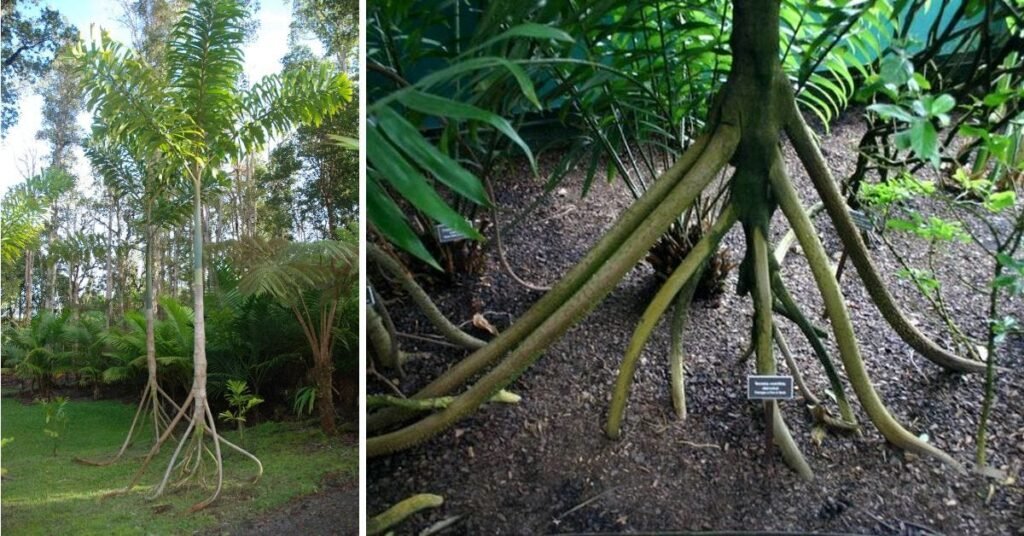The Socratea exorrhiza, commonly known as the “walking palm,” is a remarkable palm native to the tropical rainforests of Central and South America. This tree has captivated the imagination of many with its supposed ability to “walk” from shade to sunlight.

The intriguing claim suggests that the palm grows roots in the direction it wants to move and then allows its old roots to lift into the air and die. According to some, this process can take a couple of years, while one paleobiologist even suggests the tree might move two or three centimeters per day.
UNIQUE ROOT SYSTEM: WALKING PALM
Unlike other trees with roots hidden underground, the walking palm boasts a higher root system that extends outward from the base of the tree, several feet above the ground. These roots give the tree the appearance of standing on stilts or even walking. This unusual root system has sparked considerable interest and debate among scientists and nature enthusiasts alike.
THE WALKING PHENOMENON
The walking palm reportedly moves across the forest floor as new roots grow and gradually relocate it. Dr. Bodley, writing in a journal of The Association for Tropical Biology and Conservation, reported that the palm uses its roots to “walk away” from its germination point if another tree falls on the seedling and knocks it over. This mobility allows the tree to move away from obstacles that pose significant hazards to immature palms.
More recently, Peter Vrsansky, a paleobiologist from the Earth Science Institute of the Slovak Academy of Sciences in Bratislava, claimed to have witnessed this phenomenon firsthand. However, this view is not universally accepted. Many scientists argue that the idea of the walking palm is more myth than reality.

SCIENTIFIC PERSPECTIVES
Despite the ongoing debate, scientists continue to study the walking palm and its unique root system. Some believe that the stilt roots provide greater stability in swampy areas. Others suggest that these roots allow the palm to grow taller to reach sunlight without needing to increase the diameter of its stem, thus investing less biomass in underground roots than other palms.
Whether or not the walking palm truly moves as described, its distinctive root structure and adaptive capabilities continue to fascinate researchers and nature enthusiasts alike. The study of Socratea exorrhiza offers a glimpse into the complex and wondrous strategies plants employ to survive and thrive in their environments.

